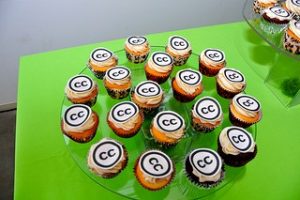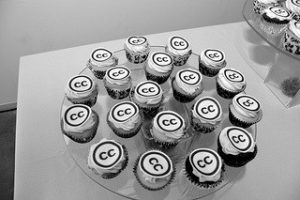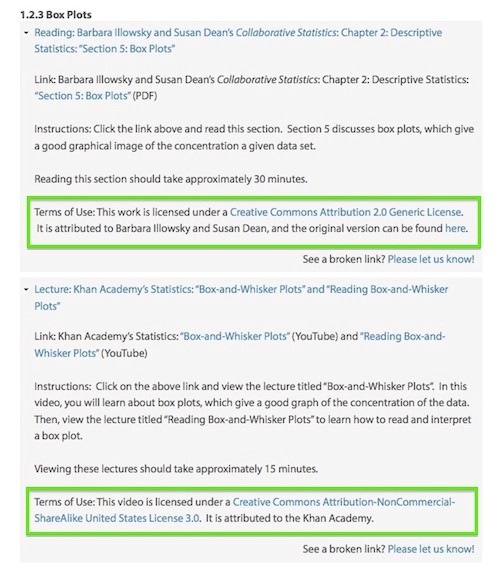12 Attributions and Academic Integrity
JCU is committed to the highest standards of academic integrity. As an open text author, you will be modelling these standards for your students and others in the broader academic community.
Even when you can legally use a resource, you must acknowledge the work of others. This is a legal moral right and an important academic integrity principle. It is also a cornerstone condition of open licences. An attribution statement provides credit to the original creator and is a legal requirement of an open licence.
Attribution vs Citation
Often the words “attribution,” “citation” and “reference” are used interchangeably. However, there is a difference between attributing and referencing – and it is all dependent on your intended purpose.
You are probably already familiar with the concept of citation. A citation allows authors to provide the source of any quotations, ideas, and information that they include in their work based on the copyrighted work of other authors. An attribution is similar to a citation, but there are also differences. These are summarised in Table 4 below:
| Citation | Attribution |
| The purpose is academic (e.g., avoiding plagiarism) | The purpose is legal (e.g., following licensing conditions) |
| It does NOT typically include licensing information for the work | Includes licensing information for the work |
| Can paraphrase, but cannot typically change the work’s meaning | Can typically change the work (e.g., advanced permission granted with licence) |
| Many citation styles are available (e.g., APA, Chicago, and MLA) | Attribution statement styles are still emerging, but there are some defined best practices |
| Cited resources are typically placed in a reference list | Attribution statements are typically found near the work used (e.g., below an image) |
What to Include in an Attribution
All six Creative Commons licences include the BY or attribution condition. This is a requirement of reuse. The original creator has explicitly informed the user of this requirement through the use of the BY condition. Providing attribution is a legal requirement of the open licence.
When creating attribution statements a good rule of thumb is to remember the acronym TASL:
- Title of the work
- Author (creator) of the work
- Source (link) or where the work can be found
- Licence of the work.
Attribution Example

Attribution example: Figure 4: Cute grey kitten by Nicolas Suzor licensed under a CC BY-SA 2.0 licence.
Note: In the example above, the image’s title is hyperlinked to the website where the image was sourced.
For the attribution example above, the HTML for the caption looks like this:
Also, if you have adapted or modified the content, you need to acknowledge this with a statement like “This image has been adapted from…[insert details].
There is flexibility in the way you present an attribution. With a bit of clever formatting and linking, it is easy to include everything, particularly in the digital environment.
Examples of Creative Commons Attribution
Below are some examples of how you might attribute the below photo.

This is good practice attribution
Figure 5: “Creative Commons 10th Birthday Celebration San Francisco” by tvol is licensed under CC BY 2.0.
because:
- Title? “Creative Commons 10th Birthday Celebration San Francisco”
- Author? “tvol” – linked to their profile page
- Source? “Creative Commons 10th Birthday Celebration San Francisco” – linked to original Flickr page
- Licence? “CC BY 2.0” – linked to licence deed.
This is a good attribution for material you modified slightly

Figure 6: “Creative Commons 10th Birthday Celebration San Francisco” by tvol, used under CC BY 2.0 / Desaturated from original.
because:
- Title, Author, Source, and Licence are all noted
- Modification? “Desaturated from original”
This is a good attribution for material from which you created a derivative work

Figure 7: This work, “90fied”, is a derivative of “Creative Commons 10th Birthday Celebration San Francisco” by tvol, used under CC BY 2.0. “90fied” is licensed under CC BY 2.0 by [Your name here].
because:
- Original Title, Author, Source, and Licence are all noted
- Derivative? “This work, “90fied”, is a derivative of…”
- The new author of the derivative work is also noted.
This is a good attribution for material from multiple sources

because:
- Title? Specific works are named, eg. “Box-and-whisker Plots”
- Author? Different authors noted for the different works
- Source? Original materials are linked for each work
- Licence? The different licences (Creative Commons Attribution for Collaborative Statistics and Creative Commons Attribution-Noncommercial-ShareAlike for the Khan Academy video) are spelled out and linked for each work
- Lastly, it is clear which attribution belongs to which work.
Resource – Attribution Builder
Instead of typing attributions manually, you can use this attribution builder to automatically generate an appropriate attribution that you can then copy into your text or caption.
Where Should I Display an Attribution?
Attribution should be given in a manner that is reasonable for the medium you are working in. Here are some of the most common practices for attributing content.
- Written documents and images: place the attribution information next to the Creative Commons material or include it as a footer toward the bottom of the page.
- Slideshows: include the attribution information as a footer on the bottom of the slide that the work appears on.
- Videos: show the attribution information for the material used when it appears on the screen.
- Podcasts: mention the artist’s name, that the work is under a Creative Commons license during the podcast, and provide full attribution next to where the podcast is available online.
Referencing
As for any publication, referencing is a requirement for our open texts. APA referencing is preferred unless the author has a strong preference for another citation style. The chosen referencing style must be applied consistently throughout the book. You can include reference lists at the end of each chapter or the end of the book.
Resource-Referencing Guides
Please consult our referencing guides.
Chapter Attribution
This chapter has been adapted in parts from:
Open Publishing Guide for Authors by University of Southern Queensland. Licensed under a Creative Commons Attribution-NonCommercial 4.0 International License.

